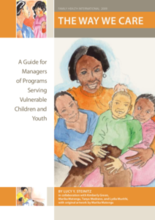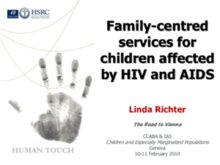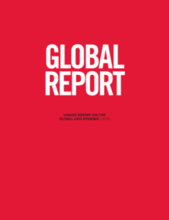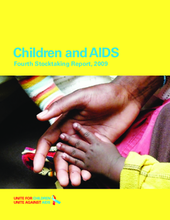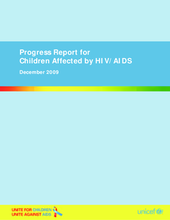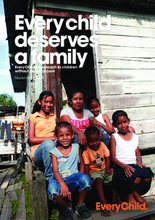Displaying 211 - 220 of 412
Manual aims to develop awareness, reinforce knowledge, and assist those designing, implementing, or managing programs for children and youth affected by poverty, HIV and AIDS, and other diseases.
The Guidelines from the IAWG provide some of the strongest direction for ensuring emergency efforts protect family unity and avoid child-family separation. Where family unity can not be preserved, these guidelines instruct on tracing and family reunification, care arrangements, durable arrangements, special issues related to refugee children, and promotion of children’s rights.
Presentation by Linda Richter at the CCABA & IAS for the Meeting on Children and Especially Marginalized Populations on the 10-11th February 2010 in Geneva.
This report, produced by the Joint United Nations Programme on HIV/AIDS provides an update on the global AIDS epidemic as well as information on HIV prevention and treatment, HIV/AIDS as it relates to human rights and gender, HIV investments, HIV/AIDS estimates and data, and country progress indicators and data. Particularly relevant to children’s care are the sections on children orphaned due to the loss of one or both parents to HIV/AIDS.
Offers updates, authoritative data, evidence and recommendations on key areas including prevention of mother-to-child transmission, paediatric care and treatment, preventing infection among adolescents and young people, protection, care and support for children affected by HIV and AIDS, programme monitoring and evaluation.
The latest in a series of reports produced by UNICEF on the status of orphans and vulnerable children (OVC). This is an easy-to-use reference document for policymakers and key stakeholders who work in the response for orphans and vulnerable children. It presents the 17 indicators described in the Guide to Monitoring and Evaluation of the National Response for Children Orphaned and Made Vulnerable by HIV/AIDS
As a result of the HIV/AIDS pandemic, there are now more than 12 million orphans in sub-Saharan Africa. The majority of these children have been absorbed into their extended families.
This doctoral thesis by Hye-Young Lim examines the laws around the recognition of child-headed households in South Africa, particularly in the context of HIV/AIDS.
Provides global estimates of the number of highly vulnerable children; a summary of United States Government (USG) assistance programs for highly vulnerable children; a summary of progress coordinating the response among USG agencies; key strategic issues and opportunities; priorities for 2009–2010 and beyond; and a summary of the results and achievements of USG assistance
This document outlines EveryChild’s approach to the growing problem of children without parental care by defining key concepts, analysing the nature and extent of the problem, exploring factors which place children at risk of losing parental care, and examining the impact of a loss of parental care on children’s rights.

